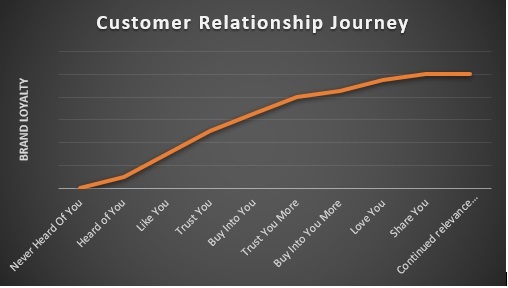
A common bit of advice is “go where your customers are” – but I don’t think it’s quite as simple as that…
You only have so much time in one day.
Consider width vs. depth. If being wide is making sure you’re on as many social media platforms as possible, depth is how well you connect with the consumer on one platform.
Your social media activity and online presence overall is like you're digging a tunnel.
You can either dig a tunnel 10m deep and 100m wide, or you can dig a tunnel 100m deep and 10m wide.
The wide tunnel is better if you want to show more people.
The deep tunnel is better if you want to show people more.
A company the size of McDonald's are already established, so they don’t need to inform as much on who they are or what they do. For McDonald’s, simply getting eyeballs on those Golden Arches is enough for the vast majority of the time. Staying in people’s thoughts is staying relevant. (Ironically, McDonald's also do an awesome job with their deeper content to manage their PR.)
But if you're not a household name, you need more than just "being in people’s eyeline." Sure, it’s necessary to attract people’s attention, but once you have it you also need to do something with it. Quality content builds trust. Each post you make, each piece of content should move people along this journey.

The journey doesn’t end with “Share You” – but at that point, that person is in the stage where you only need to maintain, like we looked at in our earlier example of McDonald’s. They already trust you and you can only lose trust from that point onwards.
Our Process
Arkom was established in 1993, when "Social Media" meant gathering round the office to look at someone’s printed photos when they got back from holiday.
Since then, Social Media has become a world of its own, carving out its own territory on the internet.
Facebook is undoubtedly still an extremely powerful platform. But success on Facebook requires a heck of a lot of time investment.
With the amount of people on the platform, our market is in there somewhere. But the process of drilling down into that market is what takes the time.
Since we’re business to business, we decided that time could be better spent building an organic following of our own and posting relevant articles on LinkedIn & Medium, which have audiences who are already more focused towards business.
Social media can’t just be all work and no play – having a personality is always going to be of benefit as that’s the only way people can build up any sort of relationship and trust with you. So, we decided to #begInstagram (if you’ll allow the portmanteau) alongside LinkedIn & Medium. We have a laugh in the office and insta will be a good output to connect with people in our industry and around our city.
I’m not an expert on Twitter and it might be the case that it’s not great at engaging people – I look at Tweets (mainly because Twitter’s notification system is irritatingly active) but I rarely interact with them. Just because I don’t interact doesn’t mean they don’t make an impression on me though. It certainly reminds me that the author exists.
However, having an established Twitter presence vs. not having one could be a measure of comfort for some people who are researching the company. Our Twitter presence isn’t active (easily fixed as even a few sporadic tweets can make an account look active) but it is reasonably well-built. As such, it isn’t damaging us to have it there and if we did suddenly want to use it, we wouldn’t have to start from scratch.
When deciding our direction, I considered which platform our end-users use. That’s solid advice. I’ve begun the process of writing articles that are directly for the end-user, but also producing content which builds up the profile/increases brand awareness of Arkom, which indirectly helps our credibility and refer-ability in the real world. Just like real life networking, you’re never just talking to the person consuming your content, but their whole network if they decide to share it either online or offline.
For us, it came down to which platforms could we foresee getting the most bang for our buck from with time put in vs. getting engagement out. Regardless of how many followers our business page had on LinkedIn, it would’ve been an avenue we explored, because that professional network is where so many of our prospective customers are looking out for the sort of content we want to put out.
Where is your target audience looking for content?
Which platform is the right fit for the best content you’d produce?
Ultimately, the choice should be determined on quality of content and target audience. If you’re B2B like us then you probably don’t want to solely focus on Snapchat.
What are you best at producing and where do people look for that kind of content?
If you feel like your best output is written word, you maybe do want to focus on blogging or email marketing vs Instagram, YouTube or Snapchat. If you’re a bit of a jack of all trades, maybe Facebook or LinkedIn (depending if you’re B2C or B2B) is the platform for you.
Whichever platform you decide to do, focus on it, go all in, start now and be consistent. Or you’ll never get the results you want.
Stay tuned; the next blog will be hitting the virtual slopes next week.
Or use the button below to stay up-to-date with the latest posts.

